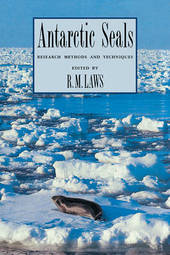
|
Antarctic Seals: Research Methods and Techniques
Paperback / softback
Main Details
| Title |
Antarctic Seals: Research Methods and Techniques
|
| Authors and Contributors |
Edited by R. M. Laws
|
| Physical Properties |
| Format:Paperback / softback | | Pages:416 | | Dimensions(mm): Height 229,Width 152 |
|
| Category/Genre | Marine & freshwater mammals |
|---|
| ISBN/Barcode |
9780521111768
|
| Classifications | Dewey:599.745 599.7909989 |
|---|
| Audience | | Professional & Vocational | |
|---|
| Illustrations |
26 Tables, unspecified; 26 Halftones, unspecified; 42 Line drawings, unspecified
|
|
Publishing Details |
| Publisher |
Cambridge University Press
|
| Imprint |
Cambridge University Press
|
| Publication Date |
11 June 2009 |
| Publication Country |
United Kingdom
|
Description
Despite its remote and seemingly rigorous environment, the Antarctic is the world's most important habitat for seals, currently supporting more seals than all other parts of the world combined. As various national Antarctic programmes were established to study these animals, the need to standardize techniques became apparent. This book, arising from work by the Scientific Committee on Antarctic Research (Group of Specialists on Seals), gives a detailed account of well-tried and, where possible, agreed methodologies, techniques, procedures and rationale for the collection and initial analysis of data on the biology and population ecology of Antarctic seals. This volume will not only help facilitate comparisons between different regions of Antarctica, but will also provide a guide for those studying seals in other parts of the world and those carrying out research on other large mammal species.
Reviews"...clearly written for seal scientists, but a scholar interested in seals or seal research will find the book informative." T.L. Hufford, Choice "...a handbook of methods and techniques to be used as a guide in the study of antarctic seals..this comprehensive volume will serve as a valuable reference not only for those studying seals in the Antarctic, but also worldwide...I found the volume very well edited...the line drawings, figures, and tables were clear and informative... I like this book, not only because it brings together a wide range of topics and contains a wealth of information relating to the methods and techniques involved in seal research, but also because it identifies research needs and areas where technology needs to be developed. The SCAR Group of Specialists on Seals, Dr. Laws, and all the authors should share a sense of great satisfaction in the production of this volume. It will be of primary interest to all those who study seals whether they are professional biologists or students." Marine Mammal Science
|